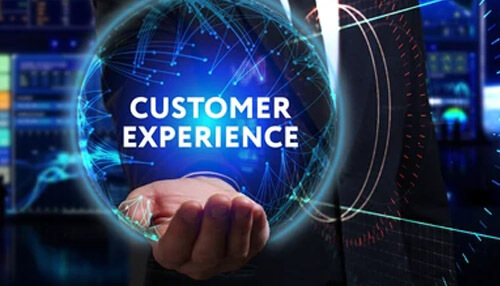End-to-End supply chain is vital for logistics providers and their customers to stay updated with current events. Collecting and analyzing real-world data enables the forecasting of the unknown. Strong leadership is founded on an open and honest basis.
3 Key Advantages of End-to-End Supply Chain Visibility
In the end, it was the COVID-19 virus that brought global supply chains to a halt. Raw resources could not be repurposed, and export shipments were as inconsistent as the raw material flow. What occurred was as follows:
When things go wrong, supply chain leaders learn how critical it is to promptly recover. Sixty-two percent of supply chain executives surveyed by the Capgemini Research Institute stated that it was critical to strengthen the supply chain’s resilience.
AI may be able to forecast what will happen in an emergency and connect the supply chain, so assisting in the reintroduction of jobs to the United States. The Internet of Things will assist in making supply chains more intelligent. A critical component of strength is the ability to observe what is going on at all times.
When everyone in the supply chain understands what they’re doing and why, it makes both large and minor choices simpler. Supply chains benefit from end-to-end supply chain visibility in three ways.
Improving the Customer Experience
Keeping track of what is being shipped has been a critical element of logistics for a long time. A technology that enables customers to track and monitor their shipments will increase customer satisfaction.
Condition data is usually housed in a black box, which instills dread in buyers that their purchases may be destroyed upon arrival. Food and temperature-sensitive items such as medicines and precision electronics should not be carried in this manner due to the likelihood of spoilage.
Insulin will not operate if the temperature is not maintained at a specified level. Another example is the use of Covid-19 vaccines in this manner. Increasing consumer confidence by giving real-time data on the temperature, humidity, and light levels in the storage area where their possessions are stored.
A supply chain involves a large number of people and procedures. There is always the danger of miscommunication, particularly with internal shipments. Customers should not be able to view the history of a product. Customers will be notified if the shippers are unclear about the best manner to store products, and the shippers will rectify any difficulties quickly.
All apps, including shipment tracking, should integrate analytics in today’s society. Shippers get increased trust and loyalty from their consumers as a consequence of customer satisfaction.
Disruptions and Risk Mitigation
Waste minimization is a significant issue for supply chain professionals. Each year, Americans waste 95 kg of food, according to the Economist Intelligence Unit and the BCFN Foundation. Things that go wrong account for 40% of supply chain waste.
As a result, in a society committed to waste reduction, there is insufficient food to feed everyone. If carriers have total visibility into the supply chain, it may be easier for them to respond quickly to adverse shipping conditions.
If you have a shipment data recorder, you may send shipment data to the cloud analytics service. Consumers and users no longer have to battle to obtain what they require. If individuals do not receive what they desire, logisticians may issue an alarm.
When a truck is fully laden with food, its cold chain systems may fail. If the box contains data recorders, high temperatures may cause harm to the items.
They will be notified by the analytics system if there is a problem with the logistics business or the driver. Shipments can also be harmed by stress and dampness. By monitoring and exchanging data, everyone in the supply chain can contribute to waste reduction.
Due to weather and other reasons, the majority of service providers have difficulty delivering products to their final destination. For example, last-mile delivery vans may lack enough cold chain storage.
Data trends from several vendors may assist logistics organizations in selecting the best providers.
Improved Demand and Supply Strategy
The subsequent link in the chain is accountable for guaranteeing that a business’s order is delivered on schedule. Production planning is tough due to the frequent variations in consumer demands.
Businesses can better plan their revenue plans as a consequence of the varied purchase trends throughout the year. Manufacturing schedules should take marketing and financial issues into account. Before beginning a significant marketing campaign, for example, the shelves in the stores must be stocked.
A project’s success requires a wealth of logistical information. Vendor performance is affected by the quality of raw materials, available storage space, and inventory management.
Manufacturers may be able to manufacture high-quality items if raw material suppliers meet their delivery commitments. If the completed items are not properly kept before being delivered to their new home, all of the effort is in vain.
Creating more accurate demand plans and minimizing potential losses is made easier by having access to condition-related data throughout production.
To be sustainable, the end-to-end supply chain must be transparent. As customers grow more aware of the origins and techniques of manufacturing, those participating in the supply chain must seek to dispel the mystery surrounding delivery systems.
This must be made available to all partners in the supply chain in order to be genuinely successful.
What’s Next?
The process of increasing end-to-end supply chain visibility is always developing as new technology and ideas become available. Additionally, you cannot mix and match solutions at this company.
As the number of global suppliers, distribution networks, and markets grows, the supply chain will become increasingly complicated. To increase supply chain visibility, omnichannel software platforms, sophisticated system integration, and other novel technologies are required.
A company’s SCV must track and regulate all raw materials and components from suppliers and manufacturers. It is vital to track the flow of items into, through, and out of facilities.
As a consequence, SCV seeks to improve supply chain efficiency, mitigate client risk, raise customer happiness, and earn additional income. Supply chain management software is a type of program that enables firms to plan, analyze, and manage their supply chains.
Access to real-time data is critical across the whole supply chain. A central control tower or hub may be erected to monitor supply chain data, such as the amount of demand for a product or the availability of supplies. From this control tower, everything that occurs in the supply chain can be viewed and managed. Reach out Agistix now for further information about the End-to-End supply chain visibility solution.




